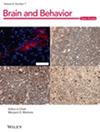Bibliometric Mapping of Research Trends and Hotspots of Microglia in Spinal Cord Injury (2000–2024)
Abstract
Introduction
Spinal cord injury (SCI), acknowledged as the most severe complication arising from spinal trauma, pertains to the dysfunction of the spinal cord due to traumatic events or other pathological conditions. Extensive research has elucidated a substantial correlation between SCI and inflammatory processes, highlighting the critical involvement of microglia in orchestrating neuroinflammatory responses. Moreover, a growing body of evidence has demonstrated a strong connection between microglial activation and both the pathogenesis and progression of SCI.
Objective
We chose bibliometric analysis to comprehensively summarize the research progress of microglia in SCI, aiming to provide researchers with current trends and future research directions.
Methods
All articles and reviews addressing microglia in SCI were systematically retrieved from the Web of Science Core Collection database, spanning publications from 2000 to 2024. Subsequent bibliometric analysis was conducted utilizing four analytical tools: VOSviewer (version 1.6.20), R software (package bibliometrix), the Biblioshiny web interface, and CiteSpace (version 6.2.R4), ensuring comprehensive examination of publication patterns and research trends.
Results
A total of 2428 publications were ultimately included in this bibliometric analysis. The annual publication count demonstrated a consistent upward trajectory. China is the country with the most published articles, and Ohio State University ranks first in institutional publications. Experimental Neurology is the journal with the most published articles, while Journal of Neuroscience is the journal with the most cited articles. Popovich Pg is the author with the highest productivity and co-citation. Cluster analysis yielded a total of 15 different co-citation clusters. Time analysis shows explosive citation outbreaks in 2006, 2009, and 2011. Keyword analysis revealed inflammation, expression, activation, and central nervous system as the most frequently occurring terms. Recent keyword trends feature emerging terms like exosomes, extracellular vesicles, and nanoparticles. Keyword bursts revealed promotes, extracellular vesicle, recovery, neuroinflammation, therapy, polarization, and pathway are the hotspots of research at the present stage and are likely to continue. These findings provide critical insights for developing microglia-targeted therapeutic strategies and prioritizing research directions in neuroinflammatory modulation to improve functional recovery after SCI.
Conclusion
Emerging research frontiers prominently feature exosomes, gut microbiota, and nanoparticles. The interplay between microglia-mediated neuroinflammation and SCI has emerged as a critical focal point in current scientific investigations and is anticipated to remain central to forthcoming scientific inquiries.


 求助内容:
求助内容: 应助结果提醒方式:
应助结果提醒方式:


